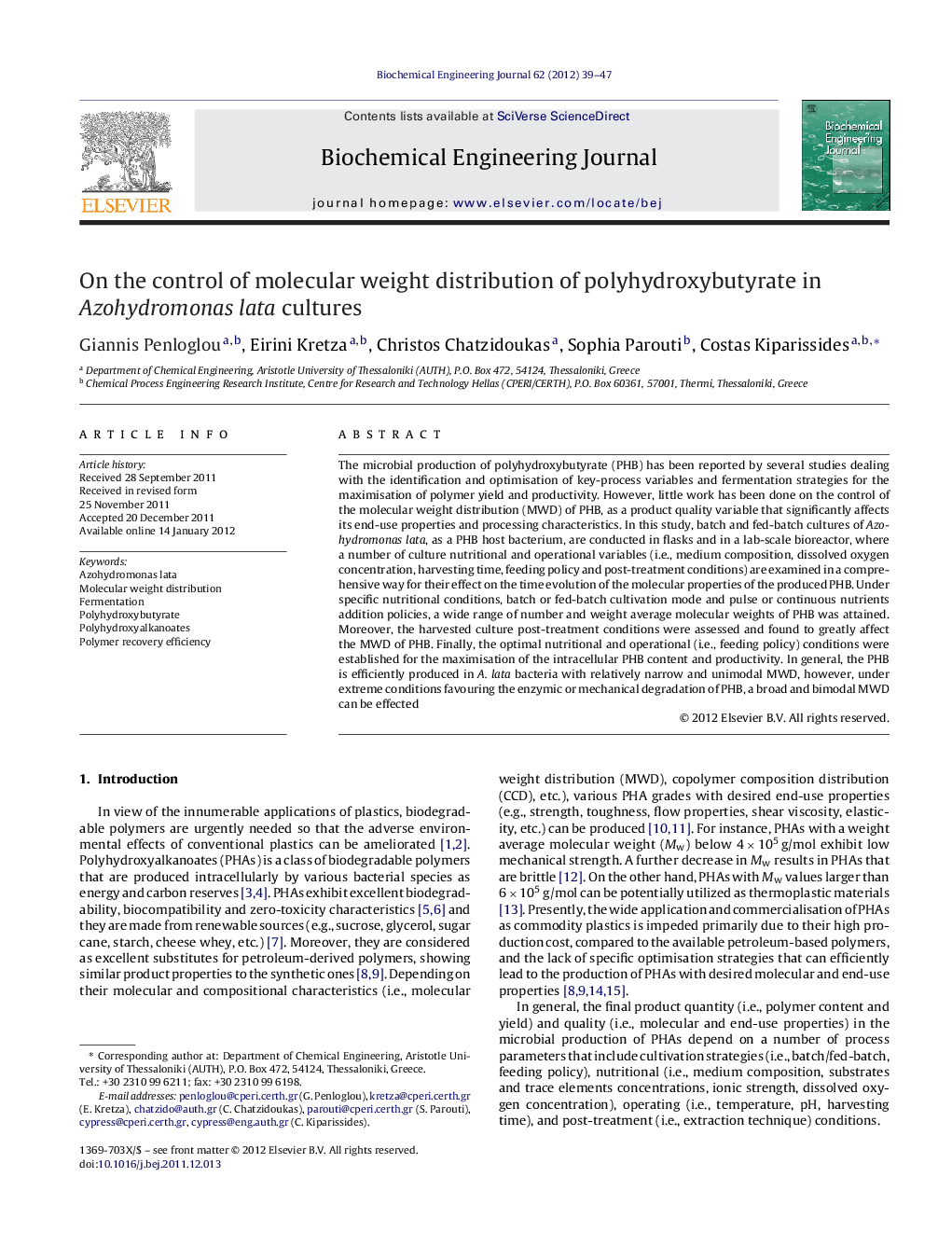| Article ID | Journal | Published Year | Pages | File Type |
|---|---|---|---|---|
| 3642 | Biochemical Engineering Journal | 2012 | 9 Pages |
The microbial production of polyhydroxybutyrate (PHB) has been reported by several studies dealing with the identification and optimisation of key-process variables and fermentation strategies for the maximisation of polymer yield and productivity. However, little work has been done on the control of the molecular weight distribution (MWD) of PHB, as a product quality variable that significantly affects its end-use properties and processing characteristics. In this study, batch and fed-batch cultures of Azohydromonas lata, as a PHB host bacterium, are conducted in flasks and in a lab-scale bioreactor, where a number of culture nutritional and operational variables (i.e., medium composition, dissolved oxygen concentration, harvesting time, feeding policy and post-treatment conditions) are examined in a comprehensive way for their effect on the time evolution of the molecular properties of the produced PHB. Under specific nutritional conditions, batch or fed-batch cultivation mode and pulse or continuous nutrients addition policies, a wide range of number and weight average molecular weights of PHB was attained. Moreover, the harvested culture post-treatment conditions were assessed and found to greatly affect the MWD of PHB. Finally, the optimal nutritional and operational (i.e., feeding policy) conditions were established for the maximisation of the intracellular PHB content and productivity. In general, the PHB is efficiently produced in A. lata bacteria with relatively narrow and unimodal MWD, however, under extreme conditions favouring the enzymic or mechanical degradation of PHB, a broad and bimodal MWD can be effected
► High-polymer-content microbial production of PHB with tailor-made molecular properties. ► Effect of key fermentation process variables on the molecular weight distribution (MWD) of PHB. ► Effect of post-treatment process conditions on PHB recovery efficiency and degradation. ► Effect of the MWD of PHB on its recovery efficiency of PHB.
